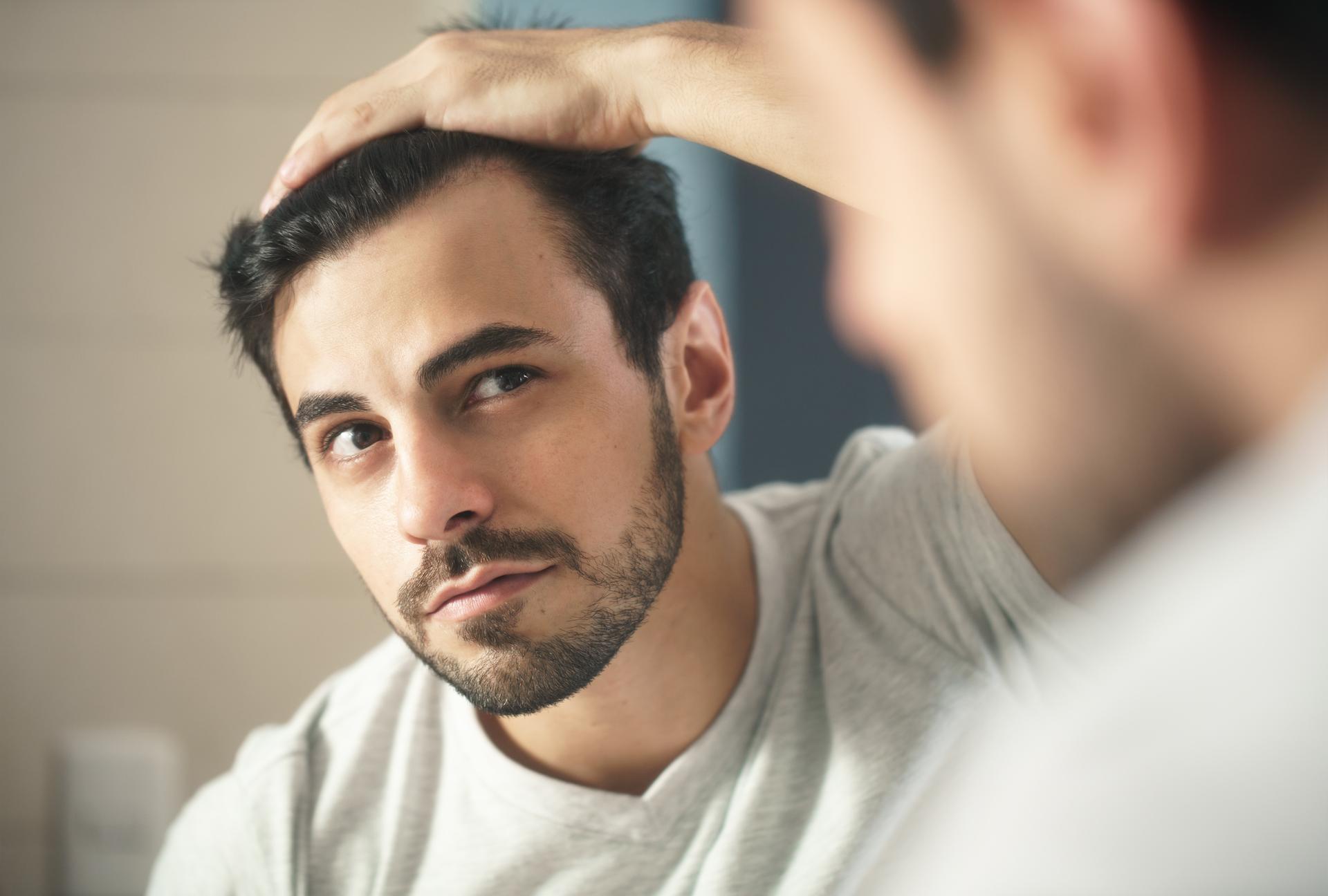Hair loss is very common in men. According to the American Hair Loss Association, almost two-thirds of men experience hair loss before they turn 35. Nearly 85% of men experience hair loss and thinning hair by the age of 50. Although androgenic alopecia or common male pattern baldness accounts for the majority of hair loss cases in men, there are several other reasons that can lead to male baldness.
Hair Loss Causes
To figure out the best possible hair loss treatment for men, it is important to find out whether the hair loss is genetic or is being caused by any other reason. The most common cause is the male pattern baldness, which is hereditary and can have an onset as early as puberty. Men with this condition genetically inherit hair that is sensitive to DHT. This is the hormone that reduces the lifespan of hair follicles. A few other hair losses causes are:
- Medical Reasons – Conditions like anemia, diabetes, lupus, or thyroid disease can lead to hair loss. Male hair loss could also be a side effect of certain drugs taken for illnesses like cancer, high blood pressure, arthritis, and depression. Treatments like radiation and chemotherapy can also cause temporary hair loss.
- Infections – Infections like ringworm can damage the hair and skin on the scalp, leading to scaly patches and bald spots.
- Alopecia Areata – This is a condition where the immune system attacks your hair follicles, leading to smooth round bald patches on the scalp.
- Hair-pulling disorder – Many people have an uncontrollable urge to pull out their own hair. This is a chronic condition, where the individual will pull out hair from the scalp, eyebrows, or other parts of the body.
- Stress or trauma – Severe emotional or physical trauma or stress can lead to hair loss.
Hair Loss Symptoms
Symptoms of hair loss in men may include:
- Thinning of hair on the scalp – The hair starts thinning in the crown area, and around the temples.
- A receding hairline – Many men experience a receding hairline by their late 30s. This usually starts above the temples, and the hairline moves back across the front of the head.
- Hair loss on top of the head – This form of baldness often results in a horseshoe-shaped pattern, leaving the top of the head exposed.
Hair Loss: Prevention Tips
Once you have figured out the cause of hair loss, it might be possible to prevent hair from falling out further or at least slow down the process of hair loss.
- Diet – Eating a balanced diet can help fight factors that damage the hair follicles. Eat a diet rich in antioxidants such as legumes, beans, berries, kale, and spinach. Avoid consuming sugar, preservatives, processed fats, and alcohol.
- Supplements – Certain nutritional deficiencies in the body can cause hair loss. Taking supplements of iron, zinc, vitamin B-12, selenium, and niacin can help in making your hair stronger and healthier.
- Avoid harsh treatments – Avoid the use of chemicals and treatments like highlights, dyes, peroxide, and perms that can cause irreversible damage to your hair follicles.
- Use soft brushes made of natural fibers – While buying a comb, choose one that has wider spaces between the bristles.
Hair Loss Treatment for Men
Not all types of hair loss can be prevented or slowed down. In such cases these are some treatments options to combat hair loss:
1. Medication – Certain over the counter medications may help in treating hair loss. These include:
- Minoxidil (Rogaine): This is a topical medication and can be purchased without a prescription. Minoxidil is known to widen the hair follicles and prolong hair growth. This results in longer hair, and a greater number of hair strands.
- Finasteride (Propecia): This is a pill that reduces the amount of DHT hormone in the scalp. DHT is the hormone that attacks the hair follicles, causing them to thin out. You will need your doctor’s prescription to buy this pill.
2. Hair transplant – This is the only surgical procedure available to treat hair loss. The two most popular hair transplant surgeries are:
- Follicular unit transplantation (FUT) – A strip of skin is removed from the back of your scalp that has abundant hair. Hair follicles from this strip are removed and reinserted into the patches where there is hair loss.
- Follicular unit extraction (FUE) – Hair follicles are extracted directly from the scalp and transplanted to the bald patches.
3. Wigs – Many men might prefer a non-medical way to combat hair loss. Wigs and hairpieces can be used to hide baldness.
4. Alternative therapies – Involves the use of oils, Saw palmetto, biotin, and other home remedies readily available.
Conclusion
If you are looking for the best hair restoration treatment, Dr. Emil Shakov, MD, FACS at the New Jersey Hair Restoration Center can offer you his guidance and expertise. He is a highly trained, board-certified, hair restoration surgeon.
Dr. Shakov holds advanced training and fellowships in aesthetic surgery from Academy of Procedural Medicine and The American Academy of Aesthetic Medicine. He was trained with the world-renowned Hair Transplant 360 program in FUE and FUT treatments and is the best doctor for hair restoration in New Jersey.


